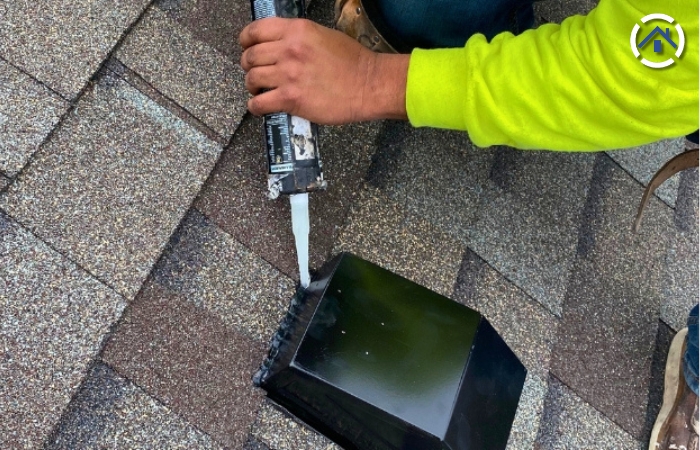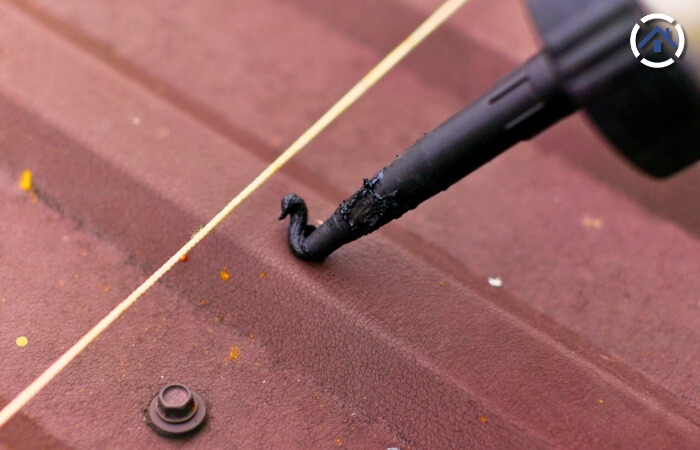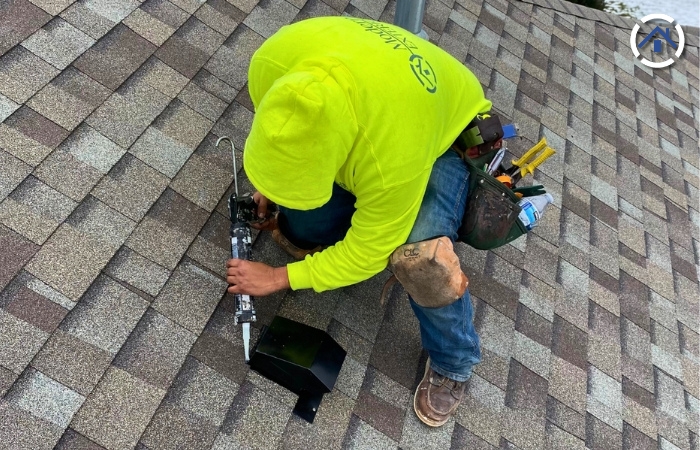
Roof maintenance is often overlooked but is profoundly important for homeownership. While roofs shield us from the elements, regular upkeep is crucial for ensuring the longevity and structural integrity of our homes. One pervasive threat is rust, which can corrode the metal components of our roofs, from exposed nails to vents.
Disregarding these seemingly minor imperfections can lead to substantial issues in the future. Therefore, let's discuss the importance of sealant on your roof in safeguarding these vital metal elements.
Roof sealant is a protective coating applied to various parts of your roof, including exposed nails and metal components. It’s designed to create a barrier against moisture, preventing rust and extending the lifespan of your roof.
Moisture Protection: Sealant acts as a shield against moisture, safeguarding metal components from rust and corrosion, which can significantly prolong the lifespan of your roofing materials.
Leak Prevention: By creating a waterproof barrier, sealant reduces the risk of leaks and structural damage, ensuring the integrity of your roof remains intact even during harsh weather conditions.
Cost-Effectiveness: Regularly reapplying sealant is a budget-friendly preventive measure compared to the potential expenses of extensive repairs or a complete roof replacement, making it a smart investment in the long run.
Exposed nails, vents, flashing, and other metal components are all part of your roof’s structure. These parts are crucial for keeping everything in place and ensuring proper ventilation. But here's the catch: they’re also exposed to the elements and are prone to rusting. When these metal parts rust, it can lead to leaks, structural damage, and even more extensive repairs.

Rust is what happens when metal meets moisture and oxygen—a chemical process known as oxidation. This reaction causes the metal to deteriorate, forming that familiar reddish-brown crust. While it might look harmless at first, rust can significantly weaken metal components, making them brittle and prone to breaking.
Rust on your roof is more than just an eyesore. It can lead to serious issues like leaks, which can damage the interior of your home, cause mold growth, and weaken the structural integrity of your roof. Imagine a storm hits, and those rusted nails can’t hold down the shingles. You’re looking at potential water damage and costly repairs. In some severe cases, entire sections of the roof may need to be replaced.
First things first, you need to know where to apply the sealant. Look for exposed nails, vents, flashing, and other metal parts. These areas are the most vulnerable to rust. Don’t forget to check around the chimney, skylights, and any roof penetrations. These spots often get overlooked but are prime targets for moisture.
Applying sealant is straightforward. Here’s a step-by-step guide:

Sealant, while effective, isn't immortal; it gradually wears down over time due to exposure to elements like weather, UV rays, and general wear and tear. It's essential to remain vigilant for indications that your sealant may be losing its efficacy. Look out for telltale signs such as cracking, peeling, or areas where it's visibly worn away. These are clear signals that the protective barrier provided by the sealant is compromised. Once you spot these signs, it's crucial to take action promptly.
Reapplication of the sealant is necessary to restore its protective properties and maintain the integrity of the surface it's applied to. By being proactive in monitoring the condition of your sealant and addressing any issues promptly, you can ensure continuous protection for the underlying surface, prolong its lifespan, and potentially save yourself from more extensive maintenance or repair down the line.
Regular roof maintenance might sound like a chore, but it’s essential. Your roof is constantly exposed to sun, rain, wind, and snow. Over time, even minor issues can escalate into major headaches.
Regular inspections are key to maintaining a healthy roof. Ideally, inspect your roof twice a year—once in the spring and once in the fall. Look for signs of rust, wear, and tear. Pay special attention to the areas where you’ve applied sealant. A tiny leak today can become a huge, costly repair tomorrow. Keeping an eye on your roof and addressing small problems early can save you a lot of trouble and money.
In summary, using sealant on exposed nails, vents, and other metal parts of your roof is a simple yet effective way to prevent rust and extend the lifespan of your roof. Regular maintenance and inspections can help you catch issues early and save you from costly repairs down the line. Don’t wait until you have a problem—take proactive steps now to protect your home. If you’re unsure about the process or need an expert’s touch, don’t hesitate to consult a roofing professional for an inspection or sealant application. Your roof—and your wallet—will thank you!